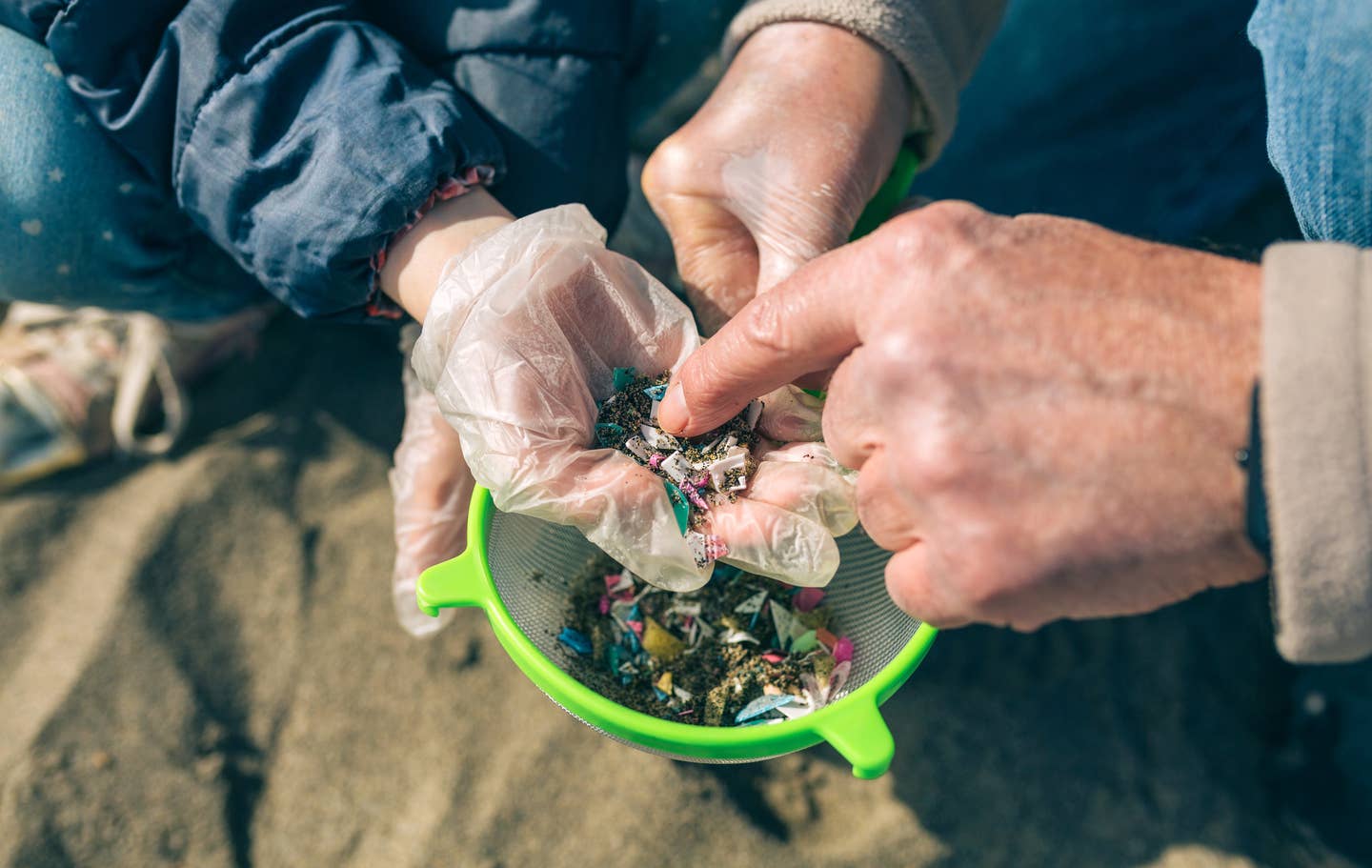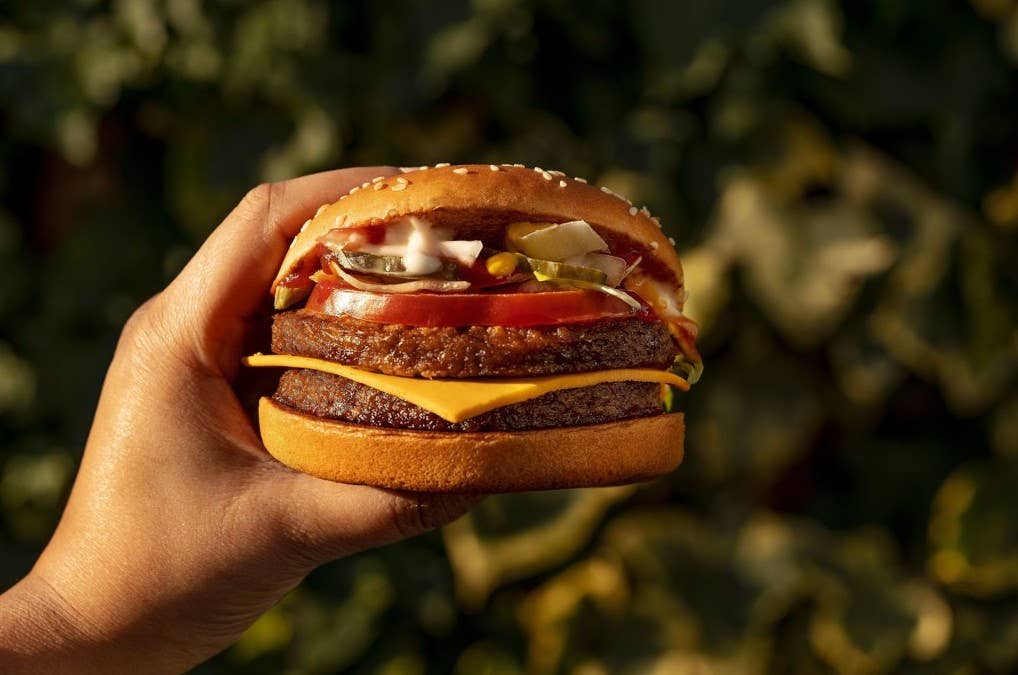
Study: Micro-Plastic Particles Are Ending Up In Your Body, Causing Harm
We all know that plastic is ending up in our oceans, but now scientists claim they are finding evidence of micro- and nano- plastic particles in human organs and our bodies. "It is concerning that these non-biodegradable materials that are present everywhere can enter and accumulate in human tissues," according to one of the study's researchers.
Plastic pollution is a dangerous 21st-century threat to animals and humans alike, as plastic particles and toxic chemicals are released into the air and water in the form of "microplastics," which are particles smaller than the eye can see. These tiny plastic shards break down and end up in the food we eat, the water we drink and then get stuck in our bodies where they break down slowly, or worse, never break down at all and remain lodged in our organs, such as our lungs, kidneys, and spleen, where they can create toxic waste within our bodies.
"You can find plastics contaminating the environment at virtually every location on the globe, and in a few short decades, we've gone from seeing plastic as a wonderful benefit to considering it a threat," says Charles Rolsky, who is presenting the work at the American Chemical Society (ACS) Fall 2020 Virtual Meeting & Expo."There's evidence that plastic is making its way into our bodies, but very few studies have looked for it there. And at this point, we don't know whether this plastic is just a nuisance or whether it represents a human health hazard."
If you can imagine having a body littered with tiny microfibers (from food packaging, your cell phone case, and other sources that get into our mouths) this can impact your long-term health. For a long time, we have been taught to recycle, reduce, and reuse materials such as plastic containers, but so far there is no playbook on how to purge plastic waste from your bodies.
The Study Examined Four Main Parts of The Body For Environmental Waste
The Arizona State University research team lead by graduates Charles Rolsky and Varun Kelkarwhich examined 47 tissue samples from a tissue bank at ASU's Neurodegenerative Disease Research Center, under Diego Mastroeni, Ph.D, established to study changes in the brain during neurodegenerative diseases, such as Alzheimer's and Parkinson's.
"Using a procedure developed to extract plastics from the tissues, the researchers found traces of plastic contamination in each of the human tissue samples taken from lungs, liver, spleen, and kidneys," a report on the study in Phys.org said. "To the researchers' knowledge, their study is the first to examine micro- and nano-plastic occurrence in human organs from individuals with a known history of environmental exposure."
"The tissue donors provided detailed information on their lifestyle, diet, and occupational exposures," Halden says. "Because these donors have such well-defined histories, our study provides the first clues on potential micro- and nanoplastic exposure sources and routes."
"The research team identified bisphenol A (BPA), a common chemical used to manufacture food containers, along with polycarbonate (PC), used to make laptop and mobile phone cases, CDs, DVDs and safety glass, as well as polyethylene terephthalate (PET), used to make clothing fibers, plastic bottles and food containers, and polyethylene (PE) in the human tissue."
The study noted that its findings are preliminary and potential health risks from these microplastics, and the longterm effects on organs and human tissue, are not yet known.
“We never want to be alarmist, but it is concerning that these non-biodegradable materials that are present everywhere can enter and accumulate in human tissues, and we don’t know the possible health effects,” said Kelkar. He added: “Once we get a better idea of what’s in the tissues, we can conduct epidemiological studies to assess human health outcomes. That way, we can start to understand the potential health risks, if any.”
The researchers have created a computer program to share information on plastic particle count by dividing the nanoparticles into units of mass and surface area. They are publishing the tool online so that others can report similar results in a standardized format. "This shared resource will help build a plastic exposure database so that we can compare exposures in organs and groups of people over time and geographic space," Halden says.
While we've known for years that plastic water bottles contain possible hazardous chemicals that can leach into our water, this is bigger, broader and the findings show that plastics creeping into humans is more insidious. The researchers suggest that "the problem of microplastic contamination is far bigger than bottled H2O. “These plastic particles are in our air, in our water and in our soil."
Kelkar and Rolsky will present the results at the American Chemical Society's Fall 2020 Virtual Meeting & Expo.
"You can find plastics contaminating the environment at virtually every location on the globe, and in a few short decades, we've gone from seeing plastic as a wonderful benefit to considering it a threat," says Charles Rolsky. "There's evidence that plastic is making its way into our bodies, but very few studies have looked for it there. And at this point, we don't know whether this plastic is just a nuisance or whether it represents a human health hazard."
Drinking Plastic Water Bottles is Just the Beginning, It's in the Food You Eat
Drinking water out of plastic bottles is just the start of the problem. Every time you take a sip of a plastic water bottle, tiny microplastics enter your mouth and end up in your body, where they can lodge in organs. "Nestlé Pure Life had the largest average concentration of plastic particles out of all the brands tested; one sample from the brand was found to contain more than 10,000 microplastic particles per liter," according to one study of water bottles.
Another potential source of these plastic particles are re-packaged foods wrapped in plastic or sealed in containers, which can be ingested into your body. "Studies have found that certain chemicals in the plastic can leach out of the plastic and into the food and beverages we eat," according to Harvard Health Publishing, of Harvard Medical School. "Some of these chemicals have been linked to health problems such as metabolic disorders (including obesity) and reduced fertility." Microwaving the food in the plastic container is one potential risk factor for the plastic leaching into the food, so when you heat up food, put it on a plate.
Choose Unprocessed Plant-Based Foods to Avoid Ingesting Microplastics
Avoid plastic water bottles, drink and eat off of class or porcelain instead of 'plastic, and seek out unprocessed food that is minimally packaged for your health, the environment, and to avoid consuming microplastics. In addition to plastic in your food, processed food contains preservatives and saturated fat, the kind that's linked to increased risk of heart disease. Eating a whole-food plant-based diet is the easiest way to avoid these complications, and limit the amount of packaged food you consume since now that you know where tiny microplastics come from, you want to avoid them sneaking into your body. Opt for a whole-food, plant-based diet to live a cleaner, healthier, life, plastic-free.
More From The Beet






